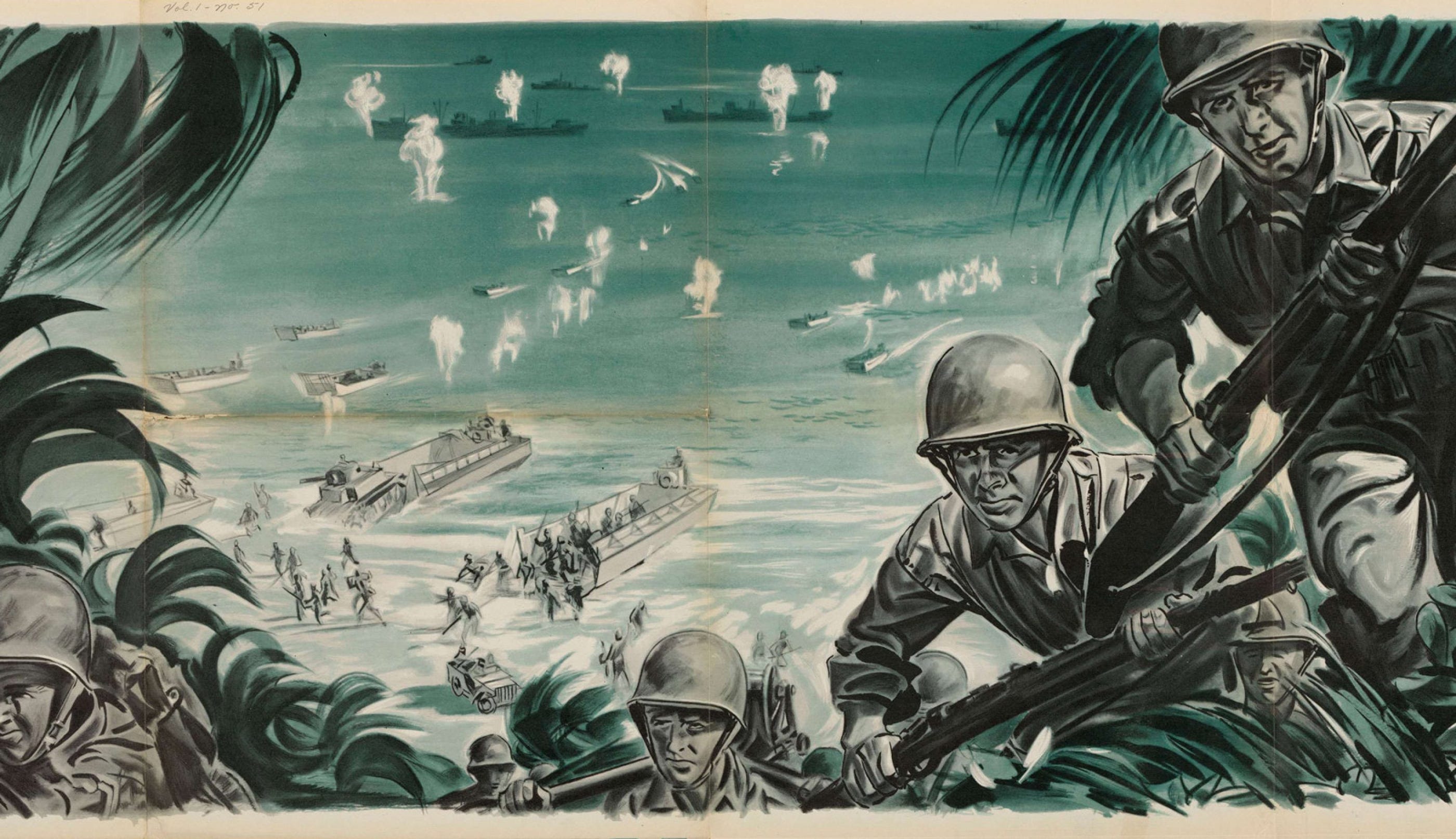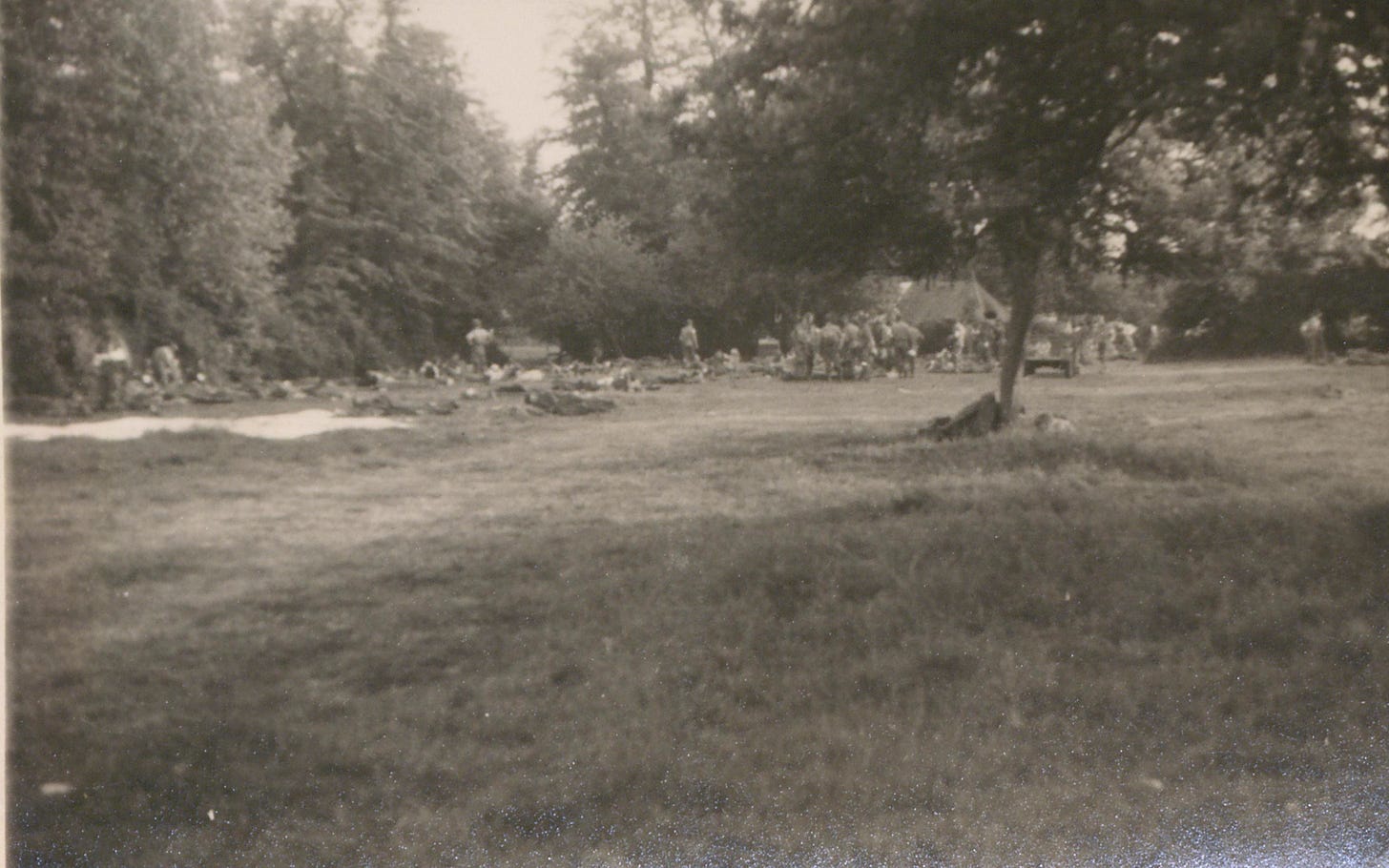Welcome to “Ridgway’s Notebook,” where we dissect the history of the airborne in WWII, its principles & developments, triumph's & failures - just the thing occupying Ridgway’s Notebook.
This week hordes of tourists, shuttled around on behemoth busses clumsily navigating the rush-hour traffic, will pound the ground into submission. Down well-manicured, roped off gravel paths they will tread to get a glimpse from the bluffs to watch a sandy expanse melt into water. This, they will think, is Normandy. Down the cobblestone streets of Sainte-Mère-Église and Carentan they will go to commemorate and celebrate in festive ways - swing dances, parades, speeches, concerts, etc - which seem to be commercialized more each year in an way to attract tourism money.
Some, however, will venture into the realm of remembrance, and tread the cattle-paths, Norman hedgerows and causeways over which their countrymen fought, bled and died for days and weeks on end. This, they will think, is Normandy. Some will hold in their minds, or speak, names of men whose lives were lost in deciding the epic so well known.
Captain William H. Houston and Sergeant Raymond Eckert were killed in action at 9:15 P.M. on June 6 when their lone glider crashed into the flooded Norman fields under heavy German mortar and rifle fire. It took two days for the rest of the glider’s occupants to join their unit, the 307th Airborne Medical Company.
For the 82nd Airborne Division, the June 6 invasion of Normandy was the first true test of its self-designed medical apparatus. Its methods of operation were heavily influenced by Captain Houston. He would never see its success.
Thankfully, most of the gliders carrying Captain Houston’s medical company landed in close proximity. Within four hours, the 82nd Airborne’s casualty clearing station was in operation.
All of the clearing station equipment… landed together. The field itself was flooded to a depth of 3-4 feet and traversed by numerous canals… The Jeeps in shallow water were driven out… Clearing station equipment was floated out on life rafts.1

In the 82nd Airborne, the battalion surgeon was at the place where the friction of battle was hottest, giving first-aid to the casualties who would eventually make their way to the clearing station.
One of those battalion surgeons was Captain Samuel F. Bassett of the 1st Battalion, 325th Glider Infantry Regiment. At the behest of late historian Gerald Devlin, Captain Bassett wrote his war memoirs. On this occasion, the 79th Anniversary of these events, it seems fitting to let Captain Bassett tell how it was, in his own words. Although a small portion of his story has been published, this is the first time it will have been read in full.
One of the toughest assignments of the First Battalion in Normandy was the crossing of the Merderet River and action at the LaFiere Causeway on the morning of June 9, 1944. After crossing the river on a sunken ford we came under small arms fire and were forced to abandon our jeep and trailer in the orchard of what we know now to be the Jules Jean Farm. We went in on foot and set up our Aid Station in a shed attached to the house. This shed had stone walls and a pole ceiling which held hay in the loft. This shed was normally used for livestock or machinery.
As daylight arrived the casualties began to come in and our shed was soon “wall to wall” with wounded. In a lull in the fighting that morning we were able to recover our jeep and trailer which brought us much needed medical supplies. The attacking rifle companies had taken a beating in the early morning hours and soon found themselves overwhelmed by the Germans holding the causeway. Falling back on the Jules Jean Farm buildings and orchard where a group of about 100 paratroopers of the 507 were dug in, the 1st Battalion set up a perimeter defense reminiscent of the old covered wagon days.
As the day wore on with no way to evacuate our wounded we soon had to look for more space. I checked with Major Teddy Sanford, C.O. of the 1st Battalion, and asked if there was any space available in the house where he had his C.P. Sanford’s reaction was typical of the man and was what I expected. His answer was, “Hell, Doc, take the whole damn house! We’ll move the C.P. out into the field!”
And he did.
We then started to move the less serious casualties across the roadway to the house. The ground floor was soon filled but we elected not to use the upper floor because the open windows were a choice target for rifle and machine gun fire. This set up with casualties in two buildings had its drawbacks for every time one of us crossed the open space between the houses he was apt to draw a round or two of enemy fire. It worked out all right, however, as none of us were ever hit.
We needed water in the Aid Station and the only source on the farm was a well with a hand pump that was located in front of the house in view and range of the German riflemen. Chaplain Henry Wall took a 5 gallon “Jerry” can and went out to this pump for water. The Germans were either poor marksmen or they respected his Red Cross arm band, I do not know, but he brought us much needed water.
During my service as battalion surgeon, we had only two men die in our Aid Station. One of them was at the Jules Jean Farmhouse Aid Station in Normandy on 9 June 1944. We were doing a double leg amputation on this man. If we had had whole blood available instead of plasma, we could have saved him, but the technology for this was not available at that time.
The 3rd Battalion of the 325 forced a crossing of the causeway on June 9th and we were able to evacuate some of our wounded on June 10th. The causeway was not secure, however, until June 11th. Although I do not recall the exact number, I believe we evacuated about 100 wounded from this Aid Station [to the division clearing station]. I feel quite sure that this was the highest number of casualties the battalion suffered in any singe action in the war.
On June 14th, as we started our attack toward St. Saver to cut the Cotentin Peninsula, I was wounded an evacuated. I was released from the hospital and returned to our camp at Scraptoft four or five days before the [325th] Regiment returned from Normandy. I will never forget my feeling of both pride and devastation as I watched the returning veterans march down the company street past the officers tents. There were so few of them… It was a very sobering, saddening sight.
(…)
On June 14th, as our attack progressed, we were moving forward following the 1st Battalion which had not all been committed as yet. During a pause in our advance, Dr. Kwak and I, along with Lt. Leonard Fleck, 1st Battalion communications officer, and the balance of our aid station group, sat down in the corner of two hedgerows to rest.
We were suddenly hit by a mortar barrage. One hit just a few yards from my feet. My right leg felt numb. I thought at first it was from the concussion of the explosion. Since we were under a tree, we decided we should spread out in case of a tree burst which would have wounded several more of us. After climbing through the hedge row and moving down it in the next field, I took cover in a ditch. After a few more rounds the mortaring ceased. I then noticed blood running down my right pants leg. I had received numerous small fragments in my thigh…
Later I noticed that a fragment had passed through my canteen, another through my field jacket, and a third had cut the strap of my legging that passed under my shoe…
[A] company medic I recall by name was Louie Ivan. Our medical jeep driver who transported casualties back to a rear medical facility said that the doctors at the rear area were asking about Ivan. They indicated that his name was on more than his share of medical tags attached to casualties from our unit. A fine testimonial as to his dedication to duty! I also recall that Ivan was killed by a near direct hit of either a mortar round or artillery shell. During a lull in combat [on July 3], he was taking a break and sat leaning against a road bank when he was killed.
In memory of those courageous souls, do we honor this day. — Maj. Gen. M.B. Ridgway
“307th A/B Medical Co. Operations Cherbourg Pen. 6 June-11 July 1944.” NARA RG407








Great read on this memorable day. Thanks to all vets who served and those who are still there.